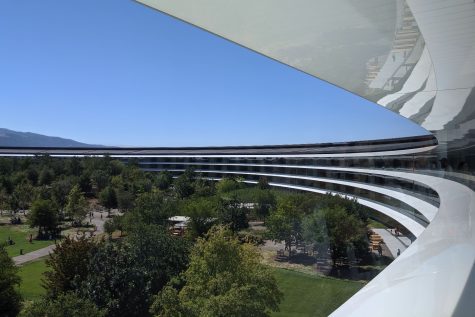Former Bay Area residents relocate across the country to escape pressure and stress.
The San Francisco Bay Area, internationally renowned as a hotspot for jobs, money, and success, has attracted immigrants ever since it boomed in popularity during the Gold Rush of 1849.
The constant influx of immigrants seeking success and a better life has steadily increased the Bay Area population, slowly dispersing over the 6,966 square miles.
However, recent media attention has revealed that a substantial portion of Bay Area residents has moved out and have settled in other communities across the country.
One of the driving factors that drove people to move was high property prices. According to a known database and real-estate brokerage site, Redfin, the median sale price of houses in San Francisco has fluctuated between 1.2-1.6 million dollars, reaching its peak in April of this year.
For many families, including former Belmont resident Ben Chappell, the cost of living in the Bay Area grew too high.
“Where we lived, the houses were really expensive, so we had to rent our home until the rental rates started to overwhelm us. So in 2019, we moved to Worcester, Massachusetts,” Chappell said.
According to Zillow, another online real estate brokerage site, the median rental rate of a house in San Francisco increased by $400 from 2021 and now rests at a median rate of $3,691 per month. Furthermore, as people keep flooding into the Bay Area to work for more giant corporations like Apple, Meta, and Google, the competition to find affordable homes increases.

This fixation on work, monetary gain, and large tech corporations has kept many families away from the hobbies they used to enjoy. Emily Ho, a Hillsdale High School alumni and former San Mateo resident, felt disconnected from her family.
“It was just so crowded everywhere you go. Even if you go to beaches like Half Moon Bay, it’s still crowded every weekend. So when we moved, we became closer because we’re spending more time together, exploring nature,” Ho said.
Ho, who moved up to Bethany, Ore., has noticed a vast difference in the culture of the Bay Area compared to the rest of the United States. In her neighborhood of younger families, everyone is asleep by 10 p.m., and by then, the lights in the area have been turned off.
“I think the quality of life is better here. I think there’s more time you can spend with the family and going out,” Ho said.
In addition to spending more time with families, former residents are finding more time to interact with their friends and more freedom for events and activities. Janet Yue and her husband, Keita Kitahama, purchased a house in Denver. Throughout 2022, they have chosen to live in their new home instead of their previous home in Dublin.
“Although we spend more time in Denver, we kept our house in the bay because the property in the Bay Area is like gold. If we sold it, then in a few years decided to come back, we would not be able to repurchase it or a similar home because it would be too expensive,” Kitahama said.
Despite their wariness, both have realized the benefits of being away from the hustle and bustle of the Bay Area life, not only for them but for their kids.
“Since Janet and I are working remotely now, we don’t have to commute for hours to get to work. Also, I feel our kids have more freedom to hang out with their friends and no longer rely on us to drive them to their friends’ houses,” Kitahama said.
In addition to the newfound freedom for their children, Yue and Kitahama have also enjoyed the reduced economic pressure from their new residence. California’s income state tax of 7.25% is more than double that of Colorado’s 4.55%. Additionally, gas prices are lower at $3.52 per gallon compared to the Bay Area’s $5.68 per gallon.
Kitahama hypothesizes that the Bay Area is so engrossed in work, success, and school they are blinded to the rest of the nation.
“The Bay Area is a bubble; it’s so successful and popular that it could be considered a separate country. Nobody leaves because they have everything there. It has lots of jobs, great food, a mixture of culture, great cities like San Francisco, and great schools,” Kitahama said.
Moving away from the Bay Area has given both Kitahama and Chappell a new perspective on life in America. Kitahama, who appreciates the less congested nature of Denver, has more time to enjoy life and no longer lives a “robotic lifestyle.”
“When working in the Bay Area, we were like robots. We lived by a routine we set, and we became numb to everything. Moving to Denver brought color back to my life,” Kitahama said.
In turn, Chappell feels more connected to the culture and lifestyle of the rest of America.
“I feel like I’ve gotten to see a lot more of the country itself because when we moved here, I drove across the entire United States,” Chappell said. “Living in an unfamiliar area with new people and seeing so many different ways of life on the way here has opened me up to how different people live in different parts of the country.”
The Bay Area will always be a hotbed of talent as prestigious universities like the University of California, Berkeley and Stanford continually pump out accomplished employees for local firms. This makes companies more inclined to stay in the bay.
But as housing prices rise, the balance of finding a high-paying job that can afford the ever-increasing rent puts immense pressure on students and new employees.
This pressure, coupled with the rapid pace of the Bay Area, gives rise to a very congested environment. Long hours spent in traffic with the drive to complete tasks, working on assignments, and the continuous routines left many former residents with a sense of numbness and detachment from their fellow humans.
“A short afternoon with friends would’ve taken months of coordinating, scheduling, and accounting for traffic,” Yue said. “Living outside of the Bay Area brought color to my life. I’ve become more social, outgoing, and, overall, more human.”












